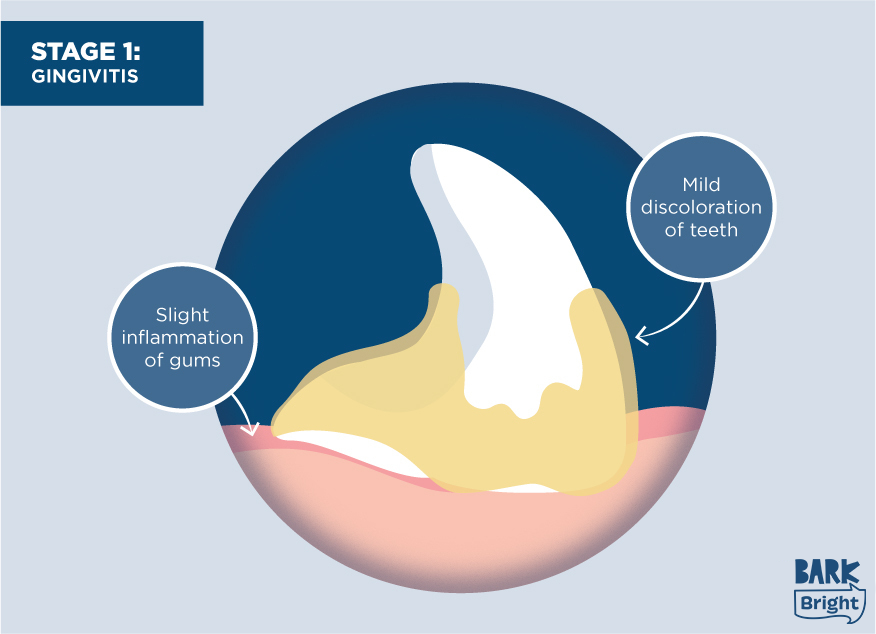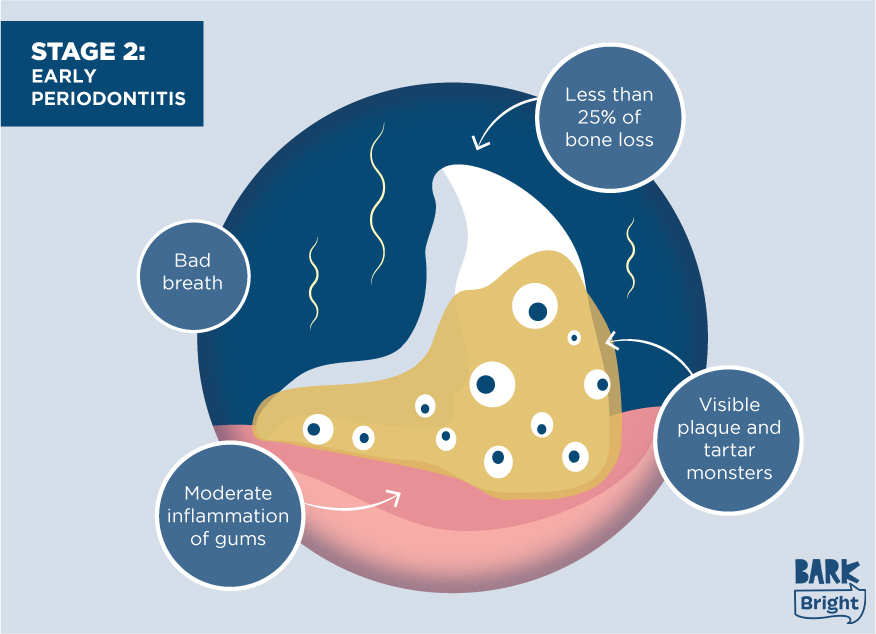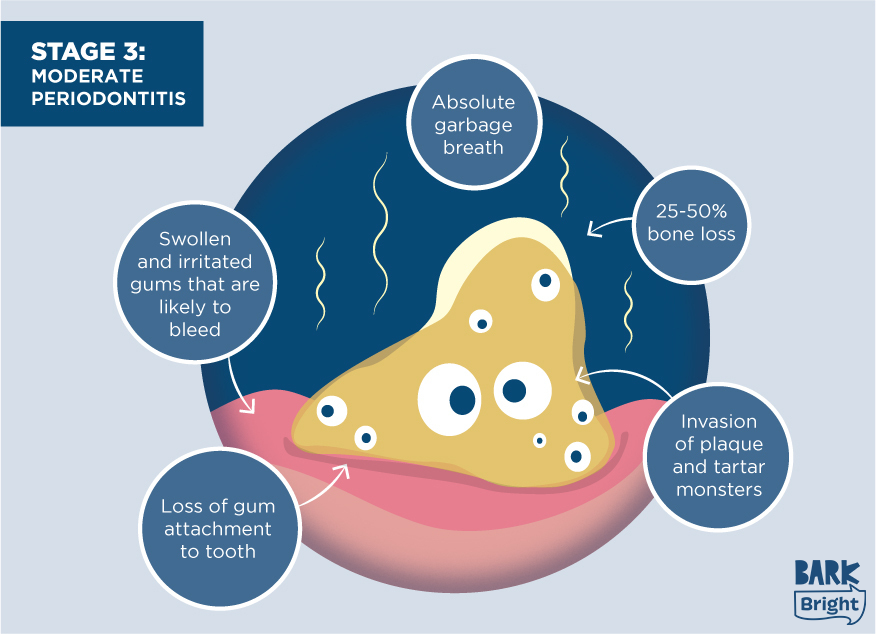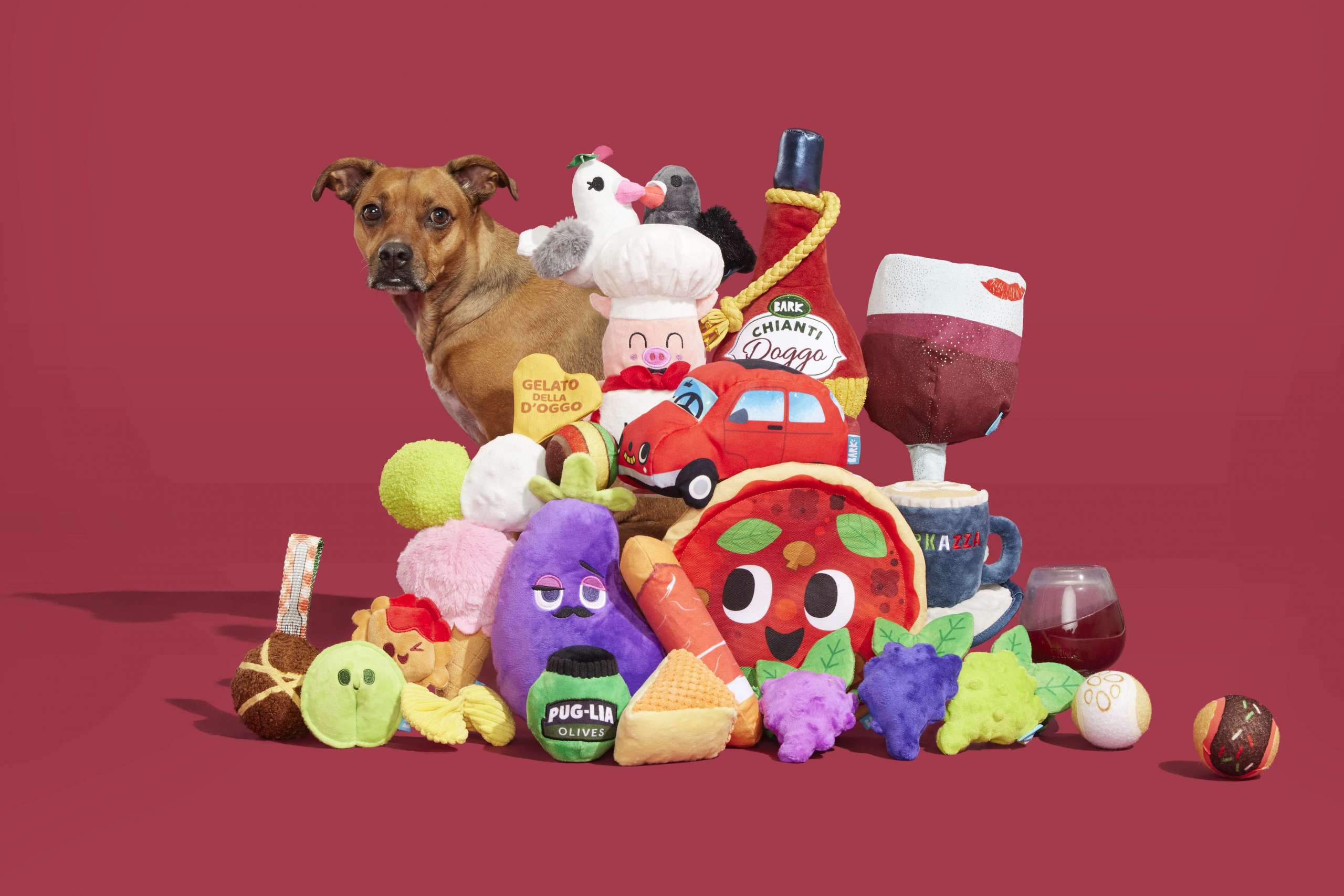By now, you might have heard that 80% of dogs experience some form of periodontal disease by the age of 3. For some puppy parents, that statistic might raise further questions, such as:
- What are the symptoms of periodontal disease?
- Can it be prevented?
- Can it be treated or reversed?
That’s why we—with the help of board-certified veterinary dentist Dr. Jan Bellows—made this visual guide to help explain the four stages of periodontal disease.
Stage 1: Gingivitis


Gingivitis might be a familiar term to you, if you’ve ever been reprimanded by your dentist about flossing better. It’s the first stage of periodontal disease, characterized by slight inflammation of the gums (a.k.a. swelling, redness, and tenderness) and mild teeth discoloration.
The good news? It’s entirely preventable in dogs, according to Dr. Bellows. How? By brushing your dog’s teeth every day (or using BARK Bright, the first product on the market to utilize a dental chew paired with a triple-enzymatic toothpaste for maximum effectiveness). That 80% of dogs who develop periodontal disease do so because only 2% of dog owners actually incorporate oral hygiene into their pup’s daily routine.
Stage 2: Early Periodontitis


Stage two is where things get sticky—and stinky! Have you been avoiding puppy kisses because of a sudden onset of bad breath? Halitosis is one of the symptoms of stage two periodontal disease, along with increased inflammation along the gum line and visible plaque and tartar buildup on the teeth.
By this time, your dog has lost about 25% of bone in their teeth. That means that to protect the remaining 75%, it’s time to incorporate regular dental cleanings and at-home preventative care.
Stage 3: Moderate Periodontitis


Plaque and tartar start to overtake the teeth. Why does that matter? Plaque and tartar are comprised of minerals, food deposits, and bacteria, which, if allowed to get beneath the gum line, can cause infections in the root of the tooth. Bloody gums and unbearably smelly breath are typical markers of this level of periodontal disease.
At this point, Dr. Bellows says it’s likely your dog would need further surgical intervention and potential tooth extractions to keep the rest of the mouth (and remaining 50% of bone structure) healthy. That’s why those early days and years establishing good dental hygiene habits are so important for you and your dog.
Related Article: Do You Need To Brush Your Puppy’s Teeth? Dental Care Tips For New Puppy Parents
Stage 4: Extreme, Chronic Periodontal Disease


Red gums. Bone loss of 50% or more. Pain. Potential organ damage.
These are some of the (very scary-sounding) symptoms of advanced periodontal disease, and they should definitely give you pause about how you care for your four-legged family members. It’s unlikely that infected teeth will be saved, and your dog could have developed other health issues that may be connected to their poor oral hygiene.
But there is a bright side: with early intervention and prevention measures, this stage can be avoided completely. Sure, some wear and tear on teeth is to be expected as your dog ages, but there’s no reason they shouldn’t reach their golden years with strong, healthy pearly whites.


You can help them do just that by choosing Bright! A two-step cleaning system proven to freshen breath, prevent plaque buildup, and reduce the risk of periodontal disease, the Bright Dental Kit comes in a monthly subscription box for just $1/day. The best part? There’s no toothbrush involved! Simply give the dental chew to your dog with the toothpaste squeezed along the groove, and they can brush their own teeth, no opposable thumbs required.






